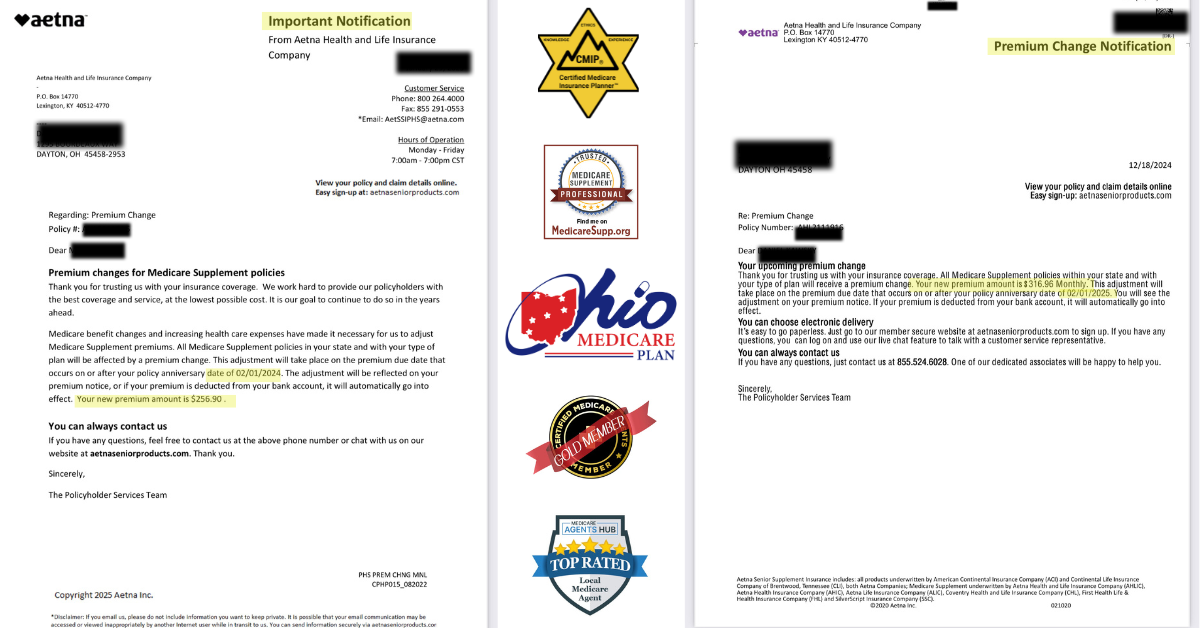Medicare Advantage Prescription Drug Plans vs. Medicare Supplement Plans: The Math That Cuts Through the Noise
By Brian C. Moore, Ohio’s Top-Rated — #1-Ranked — “Best Choice” Medicare Expert. The Most Trusted Name in Ohio for Medicare Beneficiaries Since 1999. Your No-Cost Concierge Services Medicare Benefits Guide! Certified Medicare Insurance Planner™, CMIP® Certified Self-Funding Specialist® (CSFS®)

I’ve been guiding Ohioans through Medicare decisions for almost 30 years, and one thing never changes: the fierce debate over Medicare Advantage Prescription Drug Plans (MAPD) versus Medicare Supplement Plans with Part D. It’s a shouting match that rivals today’s political squabbles — everyone’s got an opinion, but too few have the facts.
You’ve probably heard it all: loud voices pushing one side or the other, often with zero numbers to back it up. That’s a problem because misinformation can hit your wallet hard, leaving Medicare beneficiaries with unexpected costs or missed opportunities that could’ve kept them healthier and wealthier.
The stakes are high, and the math matters. I’m here to silence the noise with cold, hard figures — real data, not guesses — so you can see what’s what. This isn’t about every angle of the debate; it’s a deep dive into the financials alone. Other significant factors — like networks, flexibility, or health needs — deserve their spotlight, and I’ll tackle those in upcoming articles. For now, let’s let the numbers do the talking and see where they lead.
Before we crunch anything, I’m basing this on a real client’s situation — one of our Dayton, Ohio folks with Aetna, a 72-year-old man who’s graciously let me share his story. Ohio Medicare Plan isn’t pointing fingers at Aetna here; we stand by their products 100%. This case might be an outlier, but it’s a documented wake-up call that’s perfect for this discussion. No shade intended — just facts.

The Case: My Client’s Wake-Up Call on Compounding Costs
Picture this: my client, a 72-year-old Dayton resident, is on Medicare Supplement Plan G with Aetna. In 2024, his monthly premium was $256.90. Come 2025, it’s spiking to $316.96 — a jaw-dropping 23.37% jump in one year. That’s not a typo; it’s his reality. Plan G is the cream of the crop, covering nearly all Original Medicare gaps, but it doesn’t shield you from premium hikes — or the fact you need a separate Part D drug plan.
Here’s the kicker: most folks I talk to underestimate these annual compounded rate increases, or worse, they’re not even told about them. It’s a hidden trap that can balloon your costs over time, and it’s why I’m laying out this math — to spark your curiosity and get you thinking about what’s really at play.
We’ll compare his Medicare Supplement Plan G path against a zero-premium Medicare Advantage Prescription Drug Plan (MAPD), common in Ohio, and project it out to ages 75 and 80 and life expectancy at 83.4 (per the CDC’s latest for 65-year-olds). Buckle up — these numbers might surprise you. Source for life expectancy: CDC Life Expectancy Data
Medicare Supplement Premiums: Compounding Reality
Now, let’s widen the view. We’re no longer focusing on Plan G — this applies to Medicare Supplement Plans in general, all facing the same compounding cost pressures. My client’s 2025 premium is $316.96 per month, and below, I’ve laid out what that could grow to by ages 75 (2028), 80 (2033), and 83.4 (2043.4, about 18.4 years from age 65).
These results show the forecasted monthly and annual premiums he’d pay at each age, based on different annual increase rates: 5%, 8%, 12%, 15%, and his actual 23.37%.
Each number comes from a trusted source, and I’ll explain why it’s used. Here’s a heads-up: the commonly quoted 5% and 8% averages can trick you — they’re smoothed out to hide bigger jumps from things like inflation or higher claims, as MedicareSupplement.com points out. The results below show his current premium compounded at each rate until those target years, showing what he’d pay monthly and yearly.
READ ENTIRE ARTICLE BY CLICKING BELOW LINK
https://medium.com/@OhioMedicarePlan/medicare-advantage-prescription-drug-plans-vs-8b9aa33f8d5d
- Jun 20, 2025
